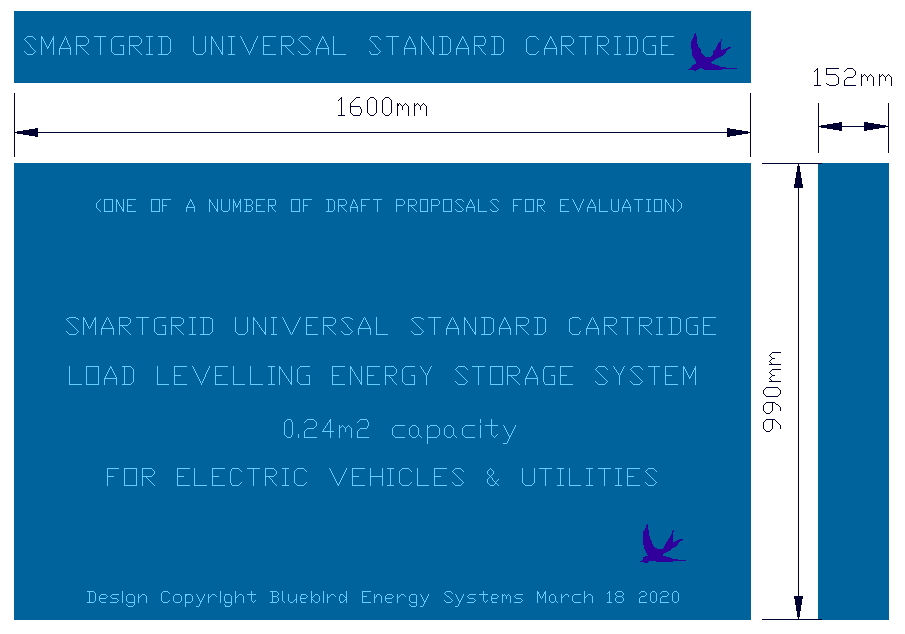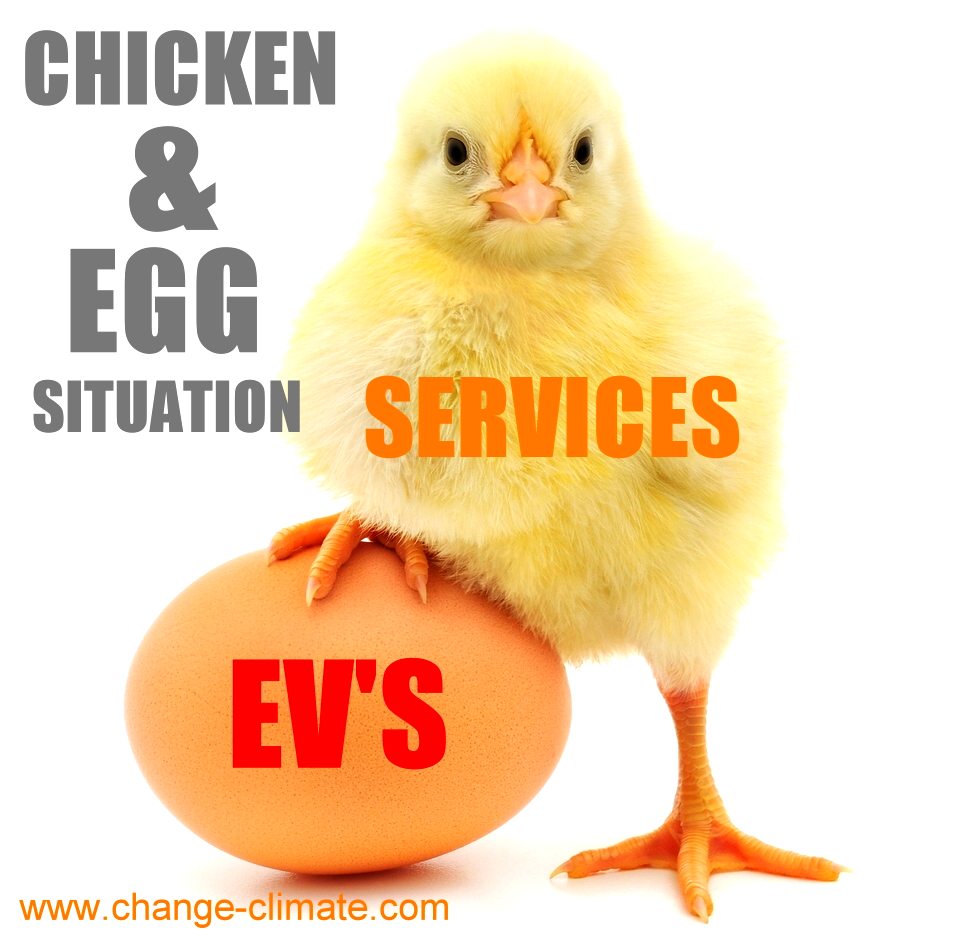|
IPCEIs
Please use our A-Z INDEX to navigate this site where page links may lead to other sites
BATTERIES - COST - STANDARDIZATION - HOME - HYDROGEN - LOAD LEVELLING - PAYD - RANGE ANXIETY - RECOVERY - SERVICE STATIONS
|
|
BATTERY OR HYDROGEN CARTRIDGE FORMAT PROPOSAL - This cartridge format provides 0.24 of a meter cubic capacity for a range of 270+ miles on hydrogen gas at 700 bar, fuel cells included, as compared to the Toyota Mirai benchmark.* All of these formats can be used in multiples to provide up to 1.92 of a cubic meter capacity - or 2,160 mile equivalent range for a family car - except of course that a medium sized family car could not accommodate such stacking, whereas a large van might carry 2-4 units, as could a bus, and a large truck could carry 8 units for a very respectable range. Copyright © Climate Change Trust and Cleaner Ocean Foundation March 2020. The design of this cartridge is protected. All rights reserved.
COMMUNICATION FROM THE COMMISSION
2.
IPCEIs may represent a very important contribution to economic growth, jobs and competitiveness for the Union industry and economy in view of their positive spillover effects on the internal market and the Union society.
4.
IPCEIs can be relevant for all policies and actions that fulfil common European objectives, in particular as regards the Europe 2020 (1) objectives, the Unionís flagship initiatives and key areas for economic growth such as the Key Enabling Technologies (2) (KETs).
The deployment of IPCEIs often requires a significant participation from public authorities since the market would not otherwise finance such projects. In case public financing of such projects constitutes State aid, this communication sets out the applicable rules so as to ensure that the level playing field in the internal market is preserved.
Rules on public financing of IPCEIs are already laid down in the R & D&I Framework (1) and in the Guidelines on State aid for environmental protection (2) which give guidance on the application of Article 107(3)(b) of the Treaty on the Functioning of the European Union (the Treaty).
The SAM constitutes a good opportunity to update and consolidate the existing guidance in one single document so as to bring it into line with the Europe 2020 objectives and the SAM goals and to extend it to other fields where it could be of application.
This communication therefore replaces any existing provisions on IPCEI. In this way, this communication provides Member States with dedicated and cross-disciplinary guidance aimed at encouraging the development of important collaborative projects that promote the common Euro pean interests.
Accordingly, this Communication sets out guidance as to the criteria the Commission will apply for the assessment of State aid to promote the execution of IPCEIs. It first defines its scope and then provides a list of criteria which the Commission will use to assess the nature and the importance of such projects for the purposes of the application of Article 107(3)(b) of the Treaty. It then explains how the Commission will assess the compatibility of public financing of IPCEIs under State aid rules.
This Communication does not exclude the possibility that aid to promote the execution of IPCEIs may also be found compatible with the internal market on the basis of other Treaty provisions, notably Article 107(3)(c) of the Treaty and their implementing rules.
The State aid framework is currently being modernised with a view to offering Member States greater possibilities to subsidise important projects which remedy market failures and cohesion challenges in different areas in order to promote sustainable growth and jobs.
However, those provisions may not fully address the relevance, specificities and features of IPCEIs, which may require dedicated eligibility, compatibility and procedural provisions, which are set out in the this Communication.
In determining whether a project falls within Article 107(3)(b) of the Treaty, the following criteria will apply:3.1Definition of a project
12.
The aid proposal concerns a single project which is clearly defined in respect of its objectives as well as the terms of its implementation, including its participants and its funding (1).
The project must contribute in a concrete, clear and identifiable manner to one or more Union objectives and must have a significant impact on competitiveness of the Union, sustainable growth, addressing soci etal challenges or value creation across the Union.
The project must represent an important contribution to the Unionís objectives, for instance by being of major importance for the Europe 2020 strategy, the European Research Area, the European strategy for KETs (3), the Energy Strategy for Europe (4), the 2030 framework for climate and energy policies (5), the European Energy Security Strategy (6), the Electronics Strategy for Europe, the Trans-European Transport and Energy networks, the Unionís flagship initiatives such as the Innovation Union (7), Digital Agenda for Europe (8), the Resource Efficient Europe (9), or the Integrated Industrial Policy for the Globalisation Era (10).
The project must normally involve more than one Member State (1) and its benefits must not be confined to the financing Member States, but extend to a wide part of the Union. The benefits of the project must be clearly defined in a concrete and identifiable manner (2).
The benefits of the project must not be limited to the undertakings or to the sector concerned but must be of wider relevance and application to the European economy or society through positive spillover effects (such as having systemic effects on multiple levels of the value chain, or up- or downstream markets, or having alternative uses in other sectors or modal shift) which are clearly defined in a concrete and identifiable manner.
The project must involve co-financing by the beneficiary.
19.
The project must respect the principle of the phasing out of environmental harmful subsidies, recalled by the Resource Efficiency Roadmap (3) as well as several Council conclusions (4).
A PATENT THAT IS FREE TO ALL
Though the system is to be patent, trademark and design protected, all collaborating OEMs and OESs, will be able to share in this technological energy revolution on a free basis - as part of a socially important project of common interest to European stakeholders.
To take advantage of the proposed network, all OEM vehicle makers need do, is provide a vehicle in their range of EVs with a compatible platform. These vehicles will then be able to use SmartNet service stations, but more importantly, so will their customers. The ultimate benefit is to the drivers of passenger cars, operators of municipal vehicles, and long distance haulers. They will also be able to spread costs with PAYD.
Patents are a good way of disseminating information across the globe where they are published and catalogued for all to see. The one drawback is the cost to grant, and renewal fees, multiplied by the number of countries in which protection is sought. In our view patent protection should be as free as copyright, or at least not expire in 20 years (it should be 50), and renewals should only be charged from point of significant trading.
A COMPATIBLE HYDROGEN BATTERY
Before the Universal Cartridge (UC), there was no such thing as a 'Hydrogen Battery.' Like electricity, hydrogen is an energy carrier Ė rather than a source of energy. The hydrogen has to be produced and stored as a gas or a liquid and unlocked to release the stored energy.
The invention of the UC changes that. It turns hydrogen into a convenient battery replacement for EVs. This may be particularly useful for vehicles that need a long-distance range to transport heavy goods, such as haulage trucks. Hydrogen opens up regenerative, sustainable mobility choices in our everyday lives. This format is also compatible with conventional batteries, provided that such battery packs are UC compatible - interchangeably.
OVERCOMING BATTERY PACK INCOMPATIBILITY
Batteries of all shapes and sizes are powering around 3 million electric vehicles around the world today - and that is one of the main problems: they are not compatible with those of other OEMs.
The identified incompatibility of so many and varied formats, or lack of standardization, is perceived as a major blocker to EV take-up, as a target set in Europe for 2030, to enable halting sales of diesel and petrol vehicles.
In vying with each other with different format cartridges, OEMs are putting all their eggs in one basket. But the EU are keen to set vehicle architecture straight in terms of interoperability, especially to allow for hydrogen storage to compete with battery electrics.
We believe that the battery and hydrogen alliances should work together to solve the lack of infrastructure at present: Stop competing, start cooperating.
This
is our aim, using the SmartNet
service station that caters for Universal (format) Battery Cartridges and
Universal Hydrogen Cartridges - all in under one roof.
CONTACTS
LINKS & REFERENCE
https://
BATTERIES - COST - STANDARDIZATION - HOME - HYDROGEN - LOAD LEVELLING - PAYD - RANGE ANXIETY - RECOVERY - SERVICE STATIONS
Please use our A-Z INDEX to navigate this site
|
|
This website is provided on a free basis as a public information service. copyright © Climate Change Trust 2020. Solar Studios, BN271RF, United Kingdom.
|

